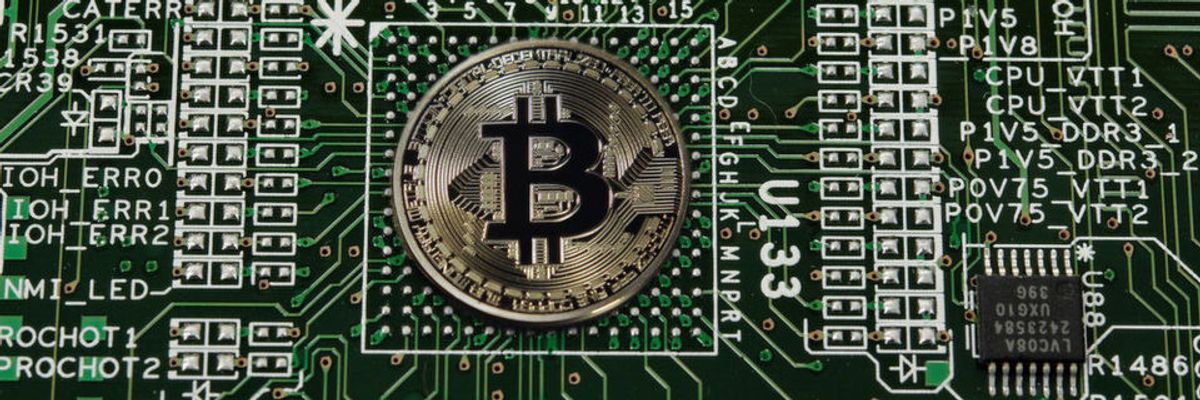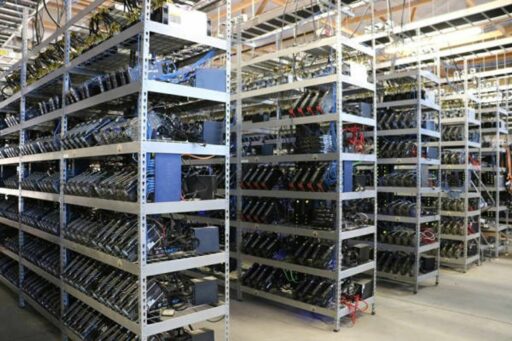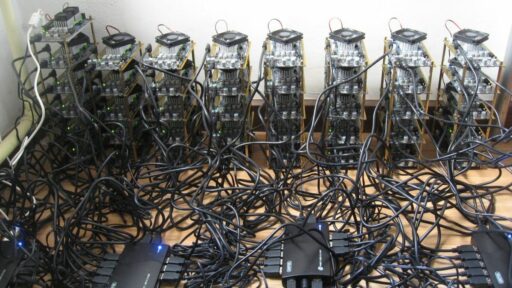The landscape of crypto mining is constantly evolving with significant advancements in technology. This article delves into the latest developments in crypto mining machines, exploring the journey from GPUs to ASICs, the integration of AI, and the various strategies for setting up mining operations. It also examines market trends and investment opportunities, as well as accessible mining solutions that democratize the mining process for enthusiasts and hobbyists alike.
Key Takeaways
- The transition from GPUs to ASICs marks a pivotal change in crypto mining hardware, leading to increased efficiency and profitability.
- Artificial intelligence is playing a crucial role in enhancing mining efficiency and fostering sustainable, green mining practices.
- Setting up a personal mining rig requires careful consideration of hardware, software, and mining pools to optimize returns.
- The crypto mining industry is witnessing a surge in investment, particularly in mining stocks, ahead of events like Bitcoin’s halving.
- Free and cloud-based mining apps are making cryptocurrency mining more accessible to the public, promoting decentralization.
The Evolution of Crypto Mining Hardware


From GPUs to ASICs: A Historical Perspective
The evolution of mining hardware has been pivotal in shaping the landscape of cryptocurrency mining. Initially, miners used CPUs (Central Processing Units) due to their availability and general-purpose nature. However, as the difficulty of mining increased, GPUs (Graphics Processing Units) became the go-to choice for their superior computational capabilities and efficiency in solving cryptographic puzzles.
NVIDIA and AMD emerged as leaders in the GPU market, with series like NVIDIA’s GeForce RTX and AMD’s Radeon RX becoming top picks for miners. The flexibility of GPUs allowed for mining a variety of cryptocurrencies, not just Bitcoin. Despite their versatility, the quest for even greater efficiency led to the development of ASICs (Application-Specific Integrated Circuits), which are custom-built for mining specific cryptocurrencies.
The transition from GPUs to ASICs marked a significant shift towards specialized hardware, which, while boosting mining efficiency, also raised concerns about centralization in the mining process.
The table below highlights the differences between GPUs and ASICs in terms of their mining capabilities:
| Hardware Type | Flexibility | Efficiency | Cryptocurrency Focus |
|---|---|---|---|
| GPU | High | Moderate | Multiple |
| ASIC | Low | High | Single |
This shift not only changed the hardware landscape but also influenced the decentralization efforts within the cryptocurrency community.
Next-Generation Mining Rigs and Their Capabilities
The race to acquire next-generation mining rigs is on as the crypto community anticipates the upcoming halving event. These new machines boast significant improvements in power and energy efficiency, setting a new standard for the industry.
- ASIC miners are at the forefront, with popular models like Bitmain’s Antminer and MicroBT’s WhatsMiner series leading the charge. Technological advancements in mining hardware focus on ASIC miners, offering efficiency and cooling improvements. Overclocking capabilities present new opportunities for miners to enhance performance.
The integration of advanced cooling solutions is crucial, as it not only extends the lifespan of the mining hardware but also maintains its operational efficiency.
While GPUs remain versatile, capable of mining various cryptocurrencies, they are increasingly outpaced by ASICs in terms of Bitcoin mining efficiency. However, the choice between ASIC and GPU will depend on the miner’s specific needs and the cryptocurrencies they aim to mine.
The Impact of Hardware on Mining Profitability
The profitability of crypto mining is inextricably linked to the hardware employed. The efficiency of mining hardware, in terms of hash rate per unit of electricity consumed, is a pivotal factor in determining profitability. As new technologies emerge, they bring forth advancements that enhance efficiency and sustainability, such as renewable energy integration, BlockDAG protocols, and strategic data center partnerships.
Mining hardware costs represent a significant initial investment, and choosing the right components is essential. The configuration of the BIOS also plays a crucial role in optimizing the performance of the rig. It’s important to note that the introduction of more efficient mining equipment can render older hardware less competitive, impacting the bottom line of miners.
| Hardware Type | Hash Rate (TH/s) | Efficiency (Watts per Hash) |
|---|---|---|
| ASICs | High | Very Efficient |
| GPUs | Moderate | Efficient |
The dynamic adjustment of mining difficulty ensures the long-term sustainability of the Bitcoin network, affecting profitability as it responds to changes in the network’s hash rate.
The Rise of AI in Crypto Mining


Integrating Artificial Intelligence for Efficiency
The integration of Artificial Intelligence (AI) into crypto mining is a game-changer for the industry. AI’s ability to analyze and interpret complex data has led to significant improvements in the efficiency and security of mining operations. By leveraging machine learning algorithms, mining rigs can now optimize their performance in real-time, adjusting to the ever-changing conditions of the crypto market.
This AI integration is geared towards maximizing the profitability of mining activities. By optimizing various aspects of the bitcoin mining process, including energy consumption and hash rate optimization, miners can achieve better results with less effort.
The table below showcases the impact of AI on key mining parameters:
| Parameter | Before AI | After AI |
|---|---|---|
| Efficiency | Moderate | High |
| Security | Basic | Enhanced |
| Profitability | Variable | Increased |
AI-driven enhancements are not limited to performance metrics. They also extend to the realm of security, where AI algorithms play a pivotal role in identifying and mitigating fraudulent activities. With the computational power supplied by companies like NVIDIA, crypto mining platforms can now offer more robust security features, ensuring the safety of transactions and the integrity of the mining process.
AI’s Role in Sustainable and Green Mining Practices
The integration of AI into crypto mining is not just a leap towards efficiency; it’s a stride towards sustainability. AI’s predictive analytics and machine learning algorithms can optimize energy consumption, leading to significant reductions in the carbon footprint of mining operations.
By harnessing AI, miners can now make data-driven decisions that align with environmental goals without compromising on profitability.
The table below showcases the potential impact of AI on energy savings in crypto mining:
| AI Application | Energy Saving Potential |
|---|---|
| Smart Cooling Systems | Up to 25% |
| Predictive Maintenance | Up to 12% |
| Algorithm Optimization | Up to 15% |
As the industry moves forward, the shift to eco-friendly solutions and alternative consensus mechanisms is crucial in addressing environmental concerns and scalability. These advancements in mining focus on efficient hardware not only for profitability but also for energy reduction.
Future Prospects: AI-Driven Crypto Mining Innovations
The integration of AI into crypto mining is not just a trend; it’s a transformative force that is reshaping the landscape. The future of crypto mining is evolving with high-efficiency rigs, renewable energy integration, BlockDAG technology, data center partnerships, and alternative mining methods for a more sustainable ecosystem. This evolution is marked by the development of smarter, more adaptive algorithms that can optimize mining operations in real-time, leading to significant gains in efficiency and profitability.
The convergence of AI and blockchain technology promises to unlock new levels of optimization and sustainability in mining practices, setting the stage for a greener and more profitable future.
As we look ahead, the potential for AI to revolutionize crypto mining is immense. Innovations such as predictive maintenance, anomaly detection, and automated decision-making are on the horizon. These advancements could lead to a new era of mining rigs that are not only more powerful but also more cognizant of energy consumption and environmental impact.
Setting Up Your Mining Operation


Step-by-Step Guide to Assembling a Mining Rig at Home
Assembling a mining rig at home can be a rewarding venture for enthusiasts and investors alike. Selecting the right components is crucial for building a rig that is both powerful and efficient. Begin by choosing a motherboard that can support multiple GPUs or a dedicated ASIC miner for higher performance.
Next, you’ll need to install and configure mining software. Options like CGMiner and BFGMiner are popular for their stability and feature set, while EasyMiner offers a more user-friendly interface for beginners. Ensure that the software you choose is compatible with your hardware and connects seamlessly to the Bitcoin network and your chosen mining pool.
Cooling solutions are vital to maintain efficiency and extend the lifespan of your mining hardware. Whether you opt for air conditioning, specialized cooling systems, or natural ventilation, keeping your rig cool is a non-negotiable aspect of a successful mining setup.
Finally, join a mining pool to increase your chances of earning rewards. Once your hardware and software are in place, you’re ready to start mining. Your rig will tackle complex mathematical problems, securing the network and potentially earning you cryptocurrency as a reward.
Choosing the Right Mining Software and Pools
Selecting the appropriate mining software is crucial for the efficiency and effectiveness of your mining operation. CGMiner and BFGMiner are among the top choices, known for their compatibility with various hardware types and comprehensive features. For those seeking a user-friendly interface, software options with a GUI, such as EasyMiner, may be preferable.
When it comes to joining a mining pool, it’s important to consider factors such as the pool’s size, payout structure, and fees. Pools like Slush Pool, F2Pool, and Antpool are prominent in the community, but it’s essential to choose one that aligns with your specific needs and goals.
Once your mining software is configured and you’ve selected a mining pool, you’re all set to commence mining. Your hardware will tackle complex calculations, securing the network and potentially garnering Bitcoin rewards.
Optimizing Your Setup for Maximum Returns
To ensure your mining operation is as profitable as possible, it’s essential to optimize every aspect of your setup. This includes fine-tuning your mining rigs, selecting the most advantageous mining pools, and staying abreast of the latest market trends. Here are some key strategies:
- Monitor and adjust your mining rig’s performance regularly to ensure peak efficiency.
- Choose mining pools that offer favorable fee structures and reliable payouts.
- Diversify your mining activities to reduce risk and increase potential gains.
Remember, the crypto mining landscape is dynamic, and staying informed is crucial for success. Adapting to market dynamics, learning continuously, and making strategic decisions are the cornerstones of maximizing returns.
It’s also important to consider the electricity costs and the potential for using renewable energy sources to power your rigs. This not only reduces your environmental footprint but can also lead to significant savings over time.
Market Trends and Investment Opportunities


Analyzing the Surge in Bitcoin Mining Stocks
In the lead-up to the anticipated Bitcoin halving event, mining stocks have experienced a significant surge. Publicly traded mining firms capitalized on the bull market of the previous year, raising substantial capital to prepare for the expected revenue reduction post-halving. This strategic bulking up indicates a robust confidence in the sector’s future, despite the inherent volatility of cryptocurrency markets.
The arms race for advanced mining hardware is in full swing, with companies placing early orders for next-generation rigs that promise enhanced power and efficiency.
The table below highlights key financial moves made by mining companies in anticipation of the halving:
| Company | Capital Raised (2023) | Stock Performance (Q1 2024) |
|---|---|---|
| MinerCo | $500M | +30% |
| HashPower | $350M | +20% |
| BlockForge | $800M | +50% |
While the market remains bullish, the recent introduction of spot Bitcoin ETFs has further bolstered mining stocks, countering earlier concerns that these financial products might have a negative impact. As the halving approaches, investors are closely watching these trends, with many viewing the current climate as an opportune moment for strategic investments in the mining sector.
Investment Strategies Pre and Post-Halving
The anticipation of Bitcoin halving events, which occur approximately every four years, creates a unique investment landscape. Investors often adjust their strategies to capitalize on the expected changes in supply and demand dynamics. Prior to a halving, the market may experience a surge in speculative interest, potentially leading to increased demand and price volatility.
As the halving approaches, it’s crucial for investors to closely monitor market sentiment and historical price movements. While past halvings have been followed by bullish runs, it’s important to remember that past performance is not indicative of future results.
Post-halving, the reduced block rewards necessitate a reevaluation of mining profitability and investment approaches. Here’s a succinct overview of key considerations:
- Market Sentiment: Heightened anticipation and speculative interest pre-halving.
- Historical Price Movements: Past halvings have seen significant price increases.
- Supply Constriction: A pronounced reduction in Bitcoin issuance post-halving.
Investors should remain vigilant, as the post-halving period can also lead to new investment opportunities in the mining sector, including stocks and emerging technologies.
Emerging Players and Technologies in the Mining Space
The landscape of crypto mining is continuously evolving, with new players and technologies entering the market. In 2024, several startups and companies have positioned themselves as leaders in the space, offering innovative solutions that promise to redefine the industry. Notable among these are Nestcoin, Soluna, and Digital Power Optimization, each bringing unique approaches to mining efficiency and sustainability.
The advancements in hardware and software are pivotal in shaping the future of mining. Next-generation rigs boast significant improvements in power and energy efficiency, a crucial factor as the industry moves towards greener practices. The table below highlights some of the key players and their contributions:
| Company | Focus Area |
|---|---|
| Nestcoin | Decentralized finance |
| Soluna | Renewable energy integration |
| Digital Power Optimization | Mining efficiency |
| Stofl Ltd. | Hardware innovation |
| Grid Share | Energy distribution |
As the halving event approaches, the race to acquire the latest hardware intensifies, with mining stocks reflecting this surge in investment. The role of AI is also becoming more pronounced, driving forward the pursuit of sustainable and environmentally friendly mining operations. The future of Bitcoin mining is being shaped by these emerging trends, and the industry is poised for a transformative phase.
Exploring Free and Accessible Mining Solutions


Top Free Crypto Mining Apps for 2024
As the crypto mining landscape continues to evolve, a plethora of free mining apps have emerged, offering enthusiasts a cost-effective entry point into the mining world. The top free crypto mining apps of 2024 provide a user-friendly interface and are designed to maximize earnings with minimal investment.
- HoneyMiner allows users to mine with just a laptop or desktop, adjusting to the computer’s performance level.
- MinerGate Mobile Miner offers a mobile solution, enabling mining on the go with smartphone devices.
- NiceHash provides a unique marketplace for hashing power, where users can buy or sell their computing power.
These applications democratize access to crypto mining, ensuring that even individuals with limited resources can participate in the cryptocurrency revolution.
While these apps are free, users must consider the electricity and hardware costs associated with mining. It’s essential to calculate potential earnings against these expenses to gauge the true profitability of using such applications.
Cloud Mining: A Viable Option for Hobbyists?
Cloud mining emerges as a convenient gateway for enthusiasts looking to enter the crypto mining space without the hefty initial investment in hardware. By renting hashing power from third-party services, individuals can start mining with minimal setup.
However, this method is not without its challenges. Potential miners should be wary of the risks associated with cloud mining, such as reliability risks and the prevalence of scams. It’s crucial to conduct thorough research and choose reputable providers.
While cloud mining can lower the barrier to entry, it’s essential to balance the ease of use with the due diligence required to ensure a secure and profitable experience.
For those considering cloud mining, here’s a quick comparison to solo mining:
- Solo Mining: Complete control, keep all rewards, significant investment required.
- Cloud Mining: Easiest and most convenient, lower upfront costs, potential for fraud and lower profitability.
The Role of Decentralization in Democratizing Mining
The push for decentralization in crypto mining is a nod to the core principles of blockchain technology. Decentralization enhances network security and reduces the risk of centralized control, which can lead to manipulation and monopolistic practices. This shift is not just technical but also ideological, as it aligns with the democratic ethos of cryptocurrency, offering ‘Power to the People’ and a more equitable distribution of mining opportunities.
Decentralization in mining is crucial for maintaining the integrity and fairness of the blockchain network. It ensures that no single entity has disproportionate control over the consensus process or the direction of the network.
With the advent of decentralized cloud projects and the support of influential figures like Jack Dorsey, the landscape of Bitcoin mining is evolving. These initiatives aim to make mining more accessible to a broader audience, thereby democratizing the mining process. Here’s a look at how decentralization is changing the game:
- Empowerment of individual miners: Small-scale miners gain the ability to compete with large mining farms.
- Reduction in entry barriers: Lower costs and simplified processes make mining more approachable for newcomers.
- Enhanced security: A distributed network of miners increases the robustness against attacks.
- Social and cultural shift: Mining becomes part of a larger movement towards a decentralized and democratic digital economy.
Conclusion
As we’ve explored the latest advancements in crypto mining machines, it’s clear that the industry is rapidly evolving. With the integration of AI, the push towards green technology, and the development of new, more efficient hardware like ASICs, miners are better equipped than ever to tackle the increasing complexity of cryptocurrency mining. The upcoming Bitcoin halving and the surge in mining stocks underscore the growing interest and investment in this sector. Whether you’re setting up an ASIC miner at home or leveraging cloud mining technology, the future of crypto mining looks bright, promising, and more accessible. As we continue to witness the emergence of innovative mining solutions, it’s an exciting time for both seasoned miners and newcomers to the crypto ecosystem.
Frequently Asked Questions
What are the latest advancements in crypto mining machines?
The latest advancements include next-generation mining rigs that offer higher power and energy efficiency, integration of AI for optimizing mining operations, and the development of more sustainable and green mining practices.
How has crypto mining hardware evolved over time?
Crypto mining hardware has evolved from basic GPUs to highly specialized ASICs designed exclusively for mining, leading to increased efficiency and speed in transaction validation.
What role does AI play in crypto mining?
AI plays a significant role in enhancing the efficiency of crypto mining by optimizing the mining process, reducing energy consumption, and contributing to the development of sustainable mining practices.
Can I set up a crypto mining rig at home?
Yes, you can set up a home crypto mining rig by following a step-by-step guide and choosing the right hardware, mining software, and pools to ensure profitability.
What are the market trends in crypto mining investments?
Market trends show a surge in bitcoin mining stocks, especially as firms race to buy new hardware before events like the Bitcoin halving. Investment strategies are also evolving with the introduction of new technologies and players in the mining space.
Are there any free crypto mining apps for 2024?
Yes, there are top free crypto mining apps available in 2024 that allow users to mine and earn cryptocurrency without significant investment, making mining more accessible to hobbyists.






